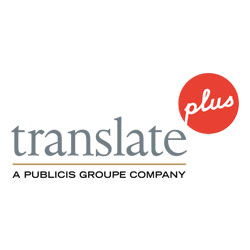Localization
eLearning localization can maximize the reach of learning and training materials and deliver the best learning experience for every target audience. This is particularly important when companies are targeting multiple language markets, because localization optimizes the more technical aspects of delivering translated content. Quality eLearning localization is not always easy, though, and adapting eLearning material for multiple markets comes with plenty of challenges. In this article, we look at the most common issues businesses will face, and how to deal with them effectively.
The Biggest Challenges In eLearning Localization
eLearning localization is a technical process that plays a role throughout the design, development, and translation of learning material and trainings. It is not uncommon for companies to underestimate the scope of localization and how involved it is in the eLearning production processes, as well as the potential challenges they might face during the localization process. Below we list the seven biggest issues businesses will most likely run into when localizing their eLearning material.
1. Text Expansion
English text, for example, tends to expand through translation, which can break layouts, User Interfaces, and other design elements.
2. Visual Content
Images and other visual elements should be relevant to each target audience (including images of people, icons, places, etc.), while any text in the image will also need translating.
3. Video Localization
Any video content needs translating and localizing for each audience. This may require translated subtitles, voice-overs, dubbing, and other adaptations.
4. Symbols
Symbols, including colors, can have different meanings and interpretations across cultures. Any symbols and icons need to deliver the intended meaning for each target audience.
5. Code And File Localization
To make translation, localization, testing, and editing as efficient as possible, the file structure and code of eLearning materials and trainings should be localized effectively during the first stage of the development process.
6. Formatting
Dates, currencies, contact details, and a range of numerical information must be localized into the correct values and format for each audience.
7. Consistency
Delivering consistent learning experiences and outcomes (completions, pass rates, grades, etc.) for each language audience is one of the biggest challenges of eLearning localization.
These issues are the most common ones that companies of any size will likely face on every eLearning localization project. However, this does not mean that the quality of the training material needs to suffer. Having the right expertise and localization partner can help significantly in minimizing the impact of the above-mentioned issues. In return, this will help deliver a consistently positive and engaging experience across all target audiences, no matter their cultural or linguistic background.
How To Overcome eLearning Localization Challenges
The best way to overcome the challenges listed above starts with planning things early. Implementing an eLearning localization strategy during the early stages of an eLearning project (ideally during the production process) is a key success factor. This is because, by planning ahead, companies can minimize the impact of the challenges listed above, or, better yet, avoid them altogether by creating eLearning and training material that is pre-optimized for effective translation and localization. A good practice, for example, is to leave the necessary space within original designs to allow for text expansion later on, and to simplify the source content to make translation easier.
For businesses that have limited experience or no expertise in developing eLearning localization strategies and dealing with the unique challenges of complex eLearning projects, the suggested solution is to look into working with localization agencies that have extensive experience in translating eLearning content and training programs. This is because an agency that has experience in eLearning localization will be in a position, and have the capacity, to provide support through the entire production process. Moreover, working with such agencies will significantly help maximize the quality of learning deliverables across every language.
With an effective localization strategy in place, eLearning courses can reach and maximize engagement with a wider audience base. Understanding the challenges of translating training and eLearning materials for multiple language audiences, and how to overcome them, is of great importance, especially for any companies that wish to achieve eLearning quality and generate Return On Investment.

translate plus
translate plus is a language services powerhouse, providing a range of services including eLearning localization. Our eLearning solutions help some of the world’s biggest brands enable global learning & expand audience reach with engaging trainings.




















